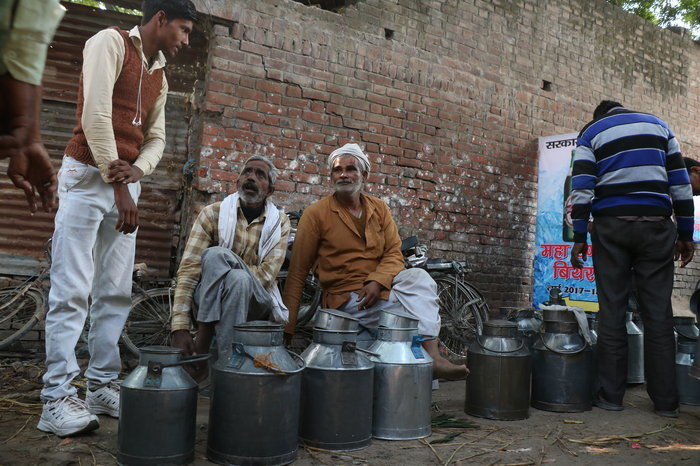Lockdown woes for dairy farmers: They are not able to sell milk and don’t know what to do with it
Most of dairy farmers sell milk to hotels and tea shops. But now, as everything is shut due to the lockdown, these farmers are not able to sell milk. Some are forced to throw it away


Nemichand, a dairy farmer, used to collect milk from his dairy as well as many other cattle farmers in the village, but since the lockdown, he now faces the challenge of selling milk. A resident of Chanderi village in Bhopal district of Madhya Pradesh, he owns a dairy farm comprising 50 cows and buffaloes and supplies milk to other shops, including sweet shops, in Bhopal each day.
“Most of our customers are hotels and tea shops, but now all are closed. We are already suffering from lack of cattle feed. We are forced to buy it expensive and yet the milk is not sold,” said Nemichand.
The 21-day lockdown has affected vegetable and fruit farmers as well as poultry and dairy business. With the low consumption of milk, the dairy operators have the same problem as to what to do with their milk.
In Karnataka, thousands of litres of milk was washed away in the canal due to the lockdown in Belagavi district. Their village committee refused to buy milk, so they had to throw away the milk. Dairy farmers also threw milk at Palakkad in Kerala.

Lalita Ramakrishnan, a state award recipient who runs a dairy of 140 cows, said: “We also checked with the nearby orphanage to supply them milk, but some farmers had already supplied milk there. So, we had to dump our production.”
Out of 140 cows of Lalita, 60 are milch cows, which give our about 330 litres in the morning and about 250 litres of milk in the evening. But since the lockdown, she had faced the challenge of disposing it.
With about 180 million tonnes of milk production, India produces 20% of the world’s milk and has remained at the top position for the last two decades. About 75% of the share in milk production is that of small, marginal and landless farmers. It is difficult for them to sell milk on their own. There are about 10 crore dairy farmers, that is, about 50 crore people are dependent on income from milk production.
In our country, there is an agricultural production worth about Rs 28 lakh crore. Its 25% share — about Rs 7 lakh crore — is of milk. The lockdown imposed by the government due to the coronavirus scare has been showing its impact on the dairy sector along with small scale industry and trade. The closure of dhabas, sweet shops and mawa factories has almost stalled the milk business.

According to the 20th Census, there are 14.51 crore cows and 10.98 crore buffaloes in the country, while godhan (bovine) population is of 18.25 crore. At the same time, the number of milch animals (bovine) is 12.53 crore.
With the low consumption of milk, government cooperatives have also reduced the price of milk procured from cattle farmers. Sudha Pandey, who runs milk dairy in Sitapur in Uttar Pradesh, said: “Our dairy milk goes to the government cooperative, but since the lockdown, the price of milk has been reduced, the price of cattle feed has gone up, but the price of milk has come down. Many dairy shops have been closed in Sitapur, now other herders who used to give milk to the halwais are approaching us with their milk. But the cooperatives are not willing to buy milk anymore.”
She added: “Even if the animal farmer tries making milk cheese or mawa, how much would he make? It still would be difficult to sell. There are several small farmers who run their expenses every day by selling milk. And fodder and animal feed demand separate expenditure.”
Meerut’s biggest animal farmer Manish Bharti informed Gaon Connection, “We have 80 cows which produce 300 to 350 litres of milk per day, but the biggest crisis before us today is that the cattle feed is becoming costly and milk is selling cheaper and not even being consumed, so we have to direct our milk to big dairies like Parag at throwaway prices which is a major crisis.
DK Singh, in charge of milk union of Prayagraj Mandal in The Regional Cooperative Dairy Federation, Uttar Pradesh, said: “We collect milk from four districts of Prayagraj, Fatehpur, Pratapgarh and Kaushambi. But since the lockdown, the consumption of milk has gone down and milk has started coming in bigger quantities. We cannot take milk from all.”

